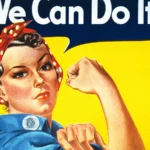Howdy, folks! Grab a cup of coffee and let’s dive into the fascinating world of Apache culture. Today, we’re gonna explore the cradleboard, or *Ts’aal* as the Apache call it. These woven carriers aren’t just a way to keep babies comfy; they’re a symbol of the Apache’s rich traditions and unbreakable bond with the land. So, let’s saddle up and ride through the history, artistry, and lasting importance of the Apache cradleboard.
Where Tradition Takes Root
We’ve all seen pictures – those beautiful, intricately woven baby carriers used by Native American tribes. But the Apache cradleboard is much more than just a way to carry a baby. It’s like a tiny time capsule, holding centuries of tradition and resilience.
Woven Masterpieces: A Legacy in Every Strand
Unlike many tribes who used wood, the Apache people, masters of basket weaving, crafted their cradleboards from natural materials like willow branches, dogwood, and even cattails. These weren’t just practical carriers; they were works of art, each unique and reflecting the skills passed down through generations.
Whispers of the Past: Decoding Cradleboard Designs
Every symbol, every carefully woven pattern on an Apache cradleboard tells a story. It’s like their own special language, sharing beliefs, legends, and values. They even have a special name for it in their language – “Ts’aal” – a word that speaks to the deep love and protection they represent. Imagine your family history woven right into the fabric of something that cradled you as a baby!
A Window to the Past: Cradleboards in Old Photographs
Old photographs show just how important cradleboards were to the Apache people. They weren’t just for carrying babies around; they were used on horseback, attached to sleds – talk about versatile! These images are like windows into the past, showing us how the Apache adapted and thrived in their environment.
A Timeless Connection: The Enduring Power of Tradition
Today, we have strollers and baby carriers designed for convenience. But the Apache cradleboard is a powerful reminder that some things go beyond practicality. It’s about art, spirituality, and that unbreakable bond between generations. Each cradleboard is a tangible link to the past, a testament to the enduring spirit of the Apache people.
Keeping Traditions Alive: The Art of Storytelling Through Weaving
The best part? This tradition isn’t lost to time. Today, skilled Apache artists are still weaving these beautiful cradleboards, keeping the spirit and skill of their ancestors alive. Every time their hands move, they’re not just weaving fibers, they’re weaving a story – a story of tradition, resilience, and the power of cultural heritage.
What is the Purpose of a Cradleboard?
We’ve already talked about what cradleboards are, but let’s dive a little deeper into why they were so important. Imagine this: you’re a parent in an Indigenous community, and life doesn’t stop just because you have a baby. You still have chores, you might need to travel, and you definitely need your hands free! That’s where the cradleboard comes in. It wasn’t just a baby carrier; it was like a trusty sidekick for parents.
Think of it like a car seat, a baby bouncer, and a crib all rolled into one. Babies could be safely strapped in, keeping them snug and secure while parents went about their day. This was especially helpful for nomadic communities who were always on the move.
But here’s the thing: cradleboards were way more than just a practical tool. They were like a piece of their culture, passed down through generations. Some cultures believed that the way a cradleboard was shaped actually helped babies develop strong, straight spines. Plus, it kept them from getting flat spots on their heads – something that could happen if a baby always lays in the same position.
And let’s not forget the artistry! Cradleboards weren’t just plain; they were often beautifully decorated. Families would add beads, intricate designs, and special charms – things that had deep meaning for them. It was a way to show off their heritage and pass down their stories to the next generation.
Even today, while you might see fewer cradleboards around, they haven’t disappeared entirely. Many Indigenous families still use them, honoring their ancestors and keeping those traditions alive. It’s a powerful reminder of how something so practical can also be a symbol of resilience, creativity, and the deep bond between a parent and child.
Is the Cradleboard Safe for Babies?
We’ve talked about the history and cultural importance of cradleboards, but safety is a big question that comes up a lot. Let’s look at some common worries and how they can be addressed.
Considering Potential Risks
While cradleboards have been used for generations, it’s important to be aware of potential risks, especially with how we understand child development today.
Hip Development: One concern is whether being in a cradleboard for long periods could affect a baby’s hips. Keeping a baby’s legs straight for a long time might increase the chances of hip dysplasia, which is when the hip joint doesn’t form correctly.
Baby’s Head Shape: Another thing people think about is something called flat head syndrome (doctors call it plagiocephaly). Because a baby’s head is soft, constant pressure on the back of their head from the cradleboard could potentially make their head a little flatter in that spot.
Breathing Safely: Of course, making sure a baby can breathe easily is always top priority! If the padding in the cradleboard isn’t right or the baby isn’t positioned well, it might make it a little harder for them to breathe comfortably.
Oops, Did They Tip Over?: Like with anything, accidents can happen. If a cradleboard tips over or falls from a high place (like a table), it could lead to injuries.
Generations of Knowledge
It’s really important to remember: Native American communities have used cradleboards safely for centuries. They have a deep well of knowledge about how to use them in a way that keeps babies safe and helps them thrive.
Tips for Using a Cradleboard Safely
If you’re thinking about using a cradleboard, here are some tips to keep in mind:
Step 1: Talk to the Experts
Before you even start using a cradleboard, it’s a good idea to chat with your pediatrician. They can give you personalized advice based on your baby’s health and development.
Step 2: Pick a Cradleboard That’s Built to Last
Not all cradleboards are created equal! Look for one that’s made from strong, durable materials and feels sturdy. Make sure it’s the right size for your baby and gives them good support.
Step 3: Keep a Watchful Eye
This might seem obvious, but never, ever leave your baby alone in a cradleboard, especially up high. Just like you’d stay close if they were on a changing mat or in a bouncer, the same goes for the cradleboard.
Step 4: Everything in Moderation
While cradleboards can be wonderful, it’s good to switch things up! Give your baby plenty of time to move around on their tummy or back on a blanket. This helps their muscles develop and prevents them from being in one position for too long.
Finding the Right Balance
Using a cradleboard is about more than just safety – it’s about connecting with traditions and honoring heritage. By taking the right precautions and staying informed, parents can embrace this meaningful practice while ensuring their little one’s well-being.
What Did the Apache Carry Babies In?
Continuing our journey into the heart of Apache life, we turn to a truly special item: the cradleboard. This wasn’t just a way to carry babies around – it was a powerful symbol of Apache culture, tradition, and love for their children. Imagine a world where everything you needed to survive and thrive was carried on your back, and you’ll understand the importance of the cradleboard.
When the Apache people journeyed across the Southwest, their babies traveled with them in these cradleboards. Picture a cradle carefully crafted from strong, flexible willow or oak branches, padded with soft leather and held together with tough sinew. It wasn’t just practical; it was like a mother’s hug made real, keeping the baby safe and secure.
The Apache believed deeply that the cradleboard wasn’t just good for carrying babies; it actually helped them grow strong and healthy. The snug fit, they thought, helped shape the baby’s head and limbs properly. It was also like a constant, comforting presence, reminding the baby that their tribe was always there for them.
But it wasn’t just about practicality and comfort. Apache cradleboards were like beautiful works of art, each one unique and telling a story. Imagine intricate beadwork covering the cradleboard, like tiny, colorful stories sewn onto its surface. These weren’t random designs; they depicted the clan’s history, who their ancestors were, and their hopes and dreams for the baby’s future. Sometimes they added feathers or other items from nature, creating a connection between the baby and the world around them.
Think of the cradleboard as more than just a baby carrier. It was a reflection of the Apache people’s artistic talents, their beliefs about the world, and the deep love they had for their children.
Here are some key things to remember about Apache cradleboards:
- More than just a carrier: Cradleboards were like cultural ambassadors, showing the world what the Apache people valued – their identity, their spirituality, and their artistic skills.
- Made with love, from nature: They were carefully constructed using materials found in nature – sturdy willow or oak branches, soft leather, and strong sinew.
- Snug and secure, with a purpose: The close fit wasn’t just for comfort; the Apache believed it helped their babies develop physically. The decorations weren’t just pretty; they held deep meaning and told stories.
- ** An everyday essential:** Apache mothers used cradleboards for almost everything – gathering food, doing chores around camp, and even when they had to travel long distances.
- A tradition that lives on: Even today, Apache artists continue to make cradleboards, keeping this beautiful tradition alive for future generations.
While we have a good understanding of cradleboards, current research continues to uncover deeper meanings and regional variations. Some experts believe that the designs and materials used in cradleboards might hold even more detailed stories about individual families and their beliefs. This ongoing exploration shows us that even seemingly simple objects can be incredibly rich in cultural significance.












